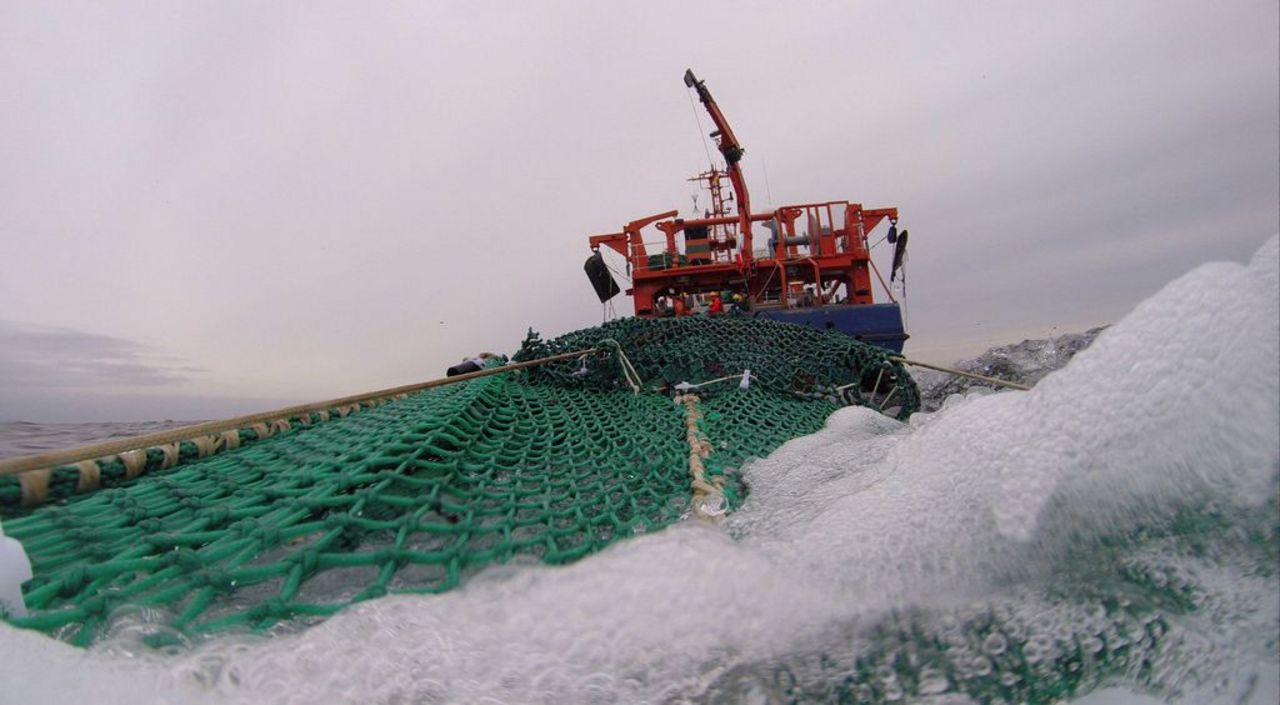Project
What are the effects of a bottom trawl fisheries?

Studies on changes in the benthic and demersal fish fauna after exclusion of mobile bottom-contacting fishing gears in the marine protected areas of the German Baltic Sea and on short- and medium-term impacts of a commercial bottom trawl on the local fish community
Bottom trawling is increasingly criticized for its impact on sea floor communities. The largest part of wild-caught fish on our plates however is fished by this method. But how does bottom trawling actually affect communities living on the seafloor of the Baltic Sea? And how long does it take before impacted communities recover after the cessation of this fishery? A large-scale national project is examining this question through an interdisciplinary lens: From sand grains and tiny unicellular organisms to larger bottom-dwelling fish, we are investigating the influence of bottom trawling in Germany's Natura 2000 protected areas in the Baltic Sea immediately before their use in these areas is excluded, and then again in regular intervals.
Background and Objective
The use of mobile bottom-contacting fishing gear (MBCF; bottom trawls) can alter the bottom-dwelling fish communities in the fished areas. Due to these potential disturbances, this type of fishing will be excluded from Natura 2000 protected areas of the German Exclusive Economic Zone (EEZ) in the Baltic Sea. In the Baltic Sea and especially in its German waters, however, there have been hardly any studies conducted that investigate potential changes in the benthic and demersal fish fauna after the exclusion of mobile bottom-contacting fishing gear. This project will therefore carry out these investigations in the two marine protected areas Fehmarnbelt and the Pomeranian Bay with Odra Bank.
Approach
In order to investigate potential effects of excluding mobile bottom-contacting fisheries in the marine protected areas of the Baltic Sea on the local fish fauna, fish communities occurring in the two project areas will be studied before the exclusion. Both within the marine protected areas and adjacent reference areas, research beam trawl hauls will be performed to document the occurring fish community. In addition, biological parameters such as length, weight, maturity and age of the sampled fish will be recorded in order to assess their fitness status. These investigations will be repeated during summer as well as during winter throughout the entire project duration to capture seasonal changes in the local fish fauna. In cooperation with the University of Rostock, the sampled fish will additionally be used to analyze the food web structure in the two contrasting marine protected areas. Based on this multi-year baseline study, possible changes in the fish fauna - after mobile bottom-contacting fishing gears have been excluded - can be assessed and evaluated. Furthermore, an experiment will be performed outside the protected areas to investigate the short- and medium-term response of the local fish fauna to a commercial bottom trawl event. In exchange with local fishers and the available fishing effort data, the fisheries dynamics within the marine protected areas Fehmarnbelt and Pomeranian Bay with Odra Bank will be described with regard to seasonal exploitation patterns.
Links and Downloads
Link to IOW: https://www.io-warnemuende.de/dam-mgf-ostsee-start.html
Link to DAM: https://www.allianz-meeresforschung.de/dam-pilotmissionen/
Thünen-Contact

Involved Thünen-Partners
Involved external Thünen-Partners
- Leibniz-Institut für Ostseeforschung Warnemünde (IOW)
(Warnemünde, Deutschland) -
Universität Rostock
(Rostock, Deutschland) -
Senckenberg Gesellschaft für Naturforschung
(Frankfurt, Wilhelmshaven, Görlitz, Deutschland) -
Universität zu Köln
(Köln, Deutschland) - GEOMAR - Helmholtz Zentrum für Ozeanforschung Kiel
(Kiel, Deutschland) -
Deutsches Geoforschungszentrum (GFZ)
(Potsdam, Deutschland)
Funding Body
-
Federal Ministry of Education and Research (BMBF)
(national, öffentlich)
Duration
3.2020 - 2.2023
More Information
Project funding number: 03F0848E
Project status:
finished
Publications
- 0
Hammerl C, Möllmann C, Oesterwind D (2024) Identifying fit-for purpose methods for monitoring fish communities. Front Mar Sci 10:1322367, DOI:10.3389/fmars.2023.1322367
- 1
Oesterwind D, Köhler L, Paar M, Henseler C, Kriegl M, Gogina M, Schubert H, Arbizu PM (2023) Trophic ecology and seasonal occurrence of two Red List fish species in the Western Baltic Sea - two of a kind? Mar Biodiv 53(5):60, DOI:10.1007/s12526-023-01368-7
- 2
Vega C de la, Paar M, Köhler L, Dorrien C von, Kriegl M, Oesterwind D, Schubert H (2023) Trophic redundancy in benthic fish food webs increases with scarcity of prey items, in the Southern Baltic Sea. Front Mar Sci 10:1143792, DOI:10.3389/fmars.2023.1143792
- 3
Kriegl M, Elias Ilosvay XE, Dorrien C von, Oesterwind D (2021) Marine protected areas: At the crossroads of nature conservation and fisheries management. Front Mar Sci 8:676264, DOI:10.3389/fmars.2021.676264

![[Translate to English:] [Translate to English:]](/media/_processed_/d/7/csm_Startseite-OF_03_c0dfd6e750.png)
![[Translate to English:] [Translate to English:]](/media/_processed_/a/3/csm_20181116-151457-Stella-Jerome-Fischfalle-Warnem%C3%BCnde-Dorsche-im-Netzk%C3%A4fig-5691_heller_3050c72fa2.png)
![[Translate to English:] Logo des Bundesministerium für Ernährung und Landwirtschaft](/media/allgemein/logos/BMEL_Logo.svg)